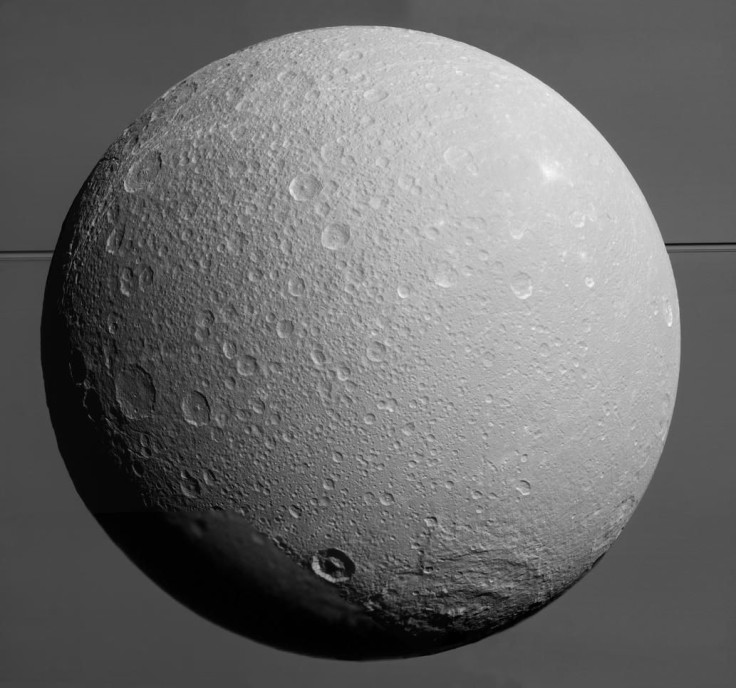Saturn Moon Dione Has Subsurface Ocean Just Like Titan and Enceladus But Can It Host Life?

Data from NASA’s current Cassini-Huygens mission, which has been orbiting Saturn since 2004, has found that a subsurface ocean lies below the icy crust of the planet’s moon Dione. Two other of Saturn’s seven moons, Titan and Enceladus, also have oceans deep within them but the new data confirms the same to be true for Dione—discovered in 1684, along with three other of Saturn's moons, by Giovanni Domenico Cassini.
In the study, published in journal Geophysical Research Letters, a team of researchers from the Royal Observatory of Belgium looked at gravity data from one of the spacecraft’s flybys. The only explanation for the gravity would be if there is an ocean below the surface, which the team believes exists several tens of kilometers below surrounding the moon’s rocky core.
The state of Dione’s crust suggests the planet had an active, stressful past.
"As an additional principle, we assumed that the icy crust can stand only the minimum amount of tension or compression necessary to maintain surface landforms," said Mikael Beuthe, lead author of the new study, in a statement. "More stress would break the crust down to pieces."
Dione’s neighbor-moon Enceladus’ ocean is closer to the surface and it has geysers near the south pole that erupt near the crust. After noticing the moon wobble as it orbits Saturn, the scientists concluded that the back-and-forth oscillations—called librations—are too large for a body that is frozen from core to surface. In turn, scientists were able to conclude that Enceladus’ crust is disconnected from its rocky interior.

While Dione has not been observed to librate, it is likely it does as well. But since the ocean is so deep, it is undetectable to access.
"Like Enceladus, Dione librates but below the detection level of Cassini,'' said Antony Trinh, co-author of the new study, in a statement. "A future orbiter hopping around Saturn's moons could test this prediction."
The scientists believe Dione’s ocean has existed since the moon was conceived, which means it could potentially have a habitable zone for microbial life.
"The contact between the ocean and the rocky core is crucial," said Attilio Rivoldini, co-author of the study, in a statement. "Rock-water interactions provide key nutrients and a source of energy, both being essential ingredients for life."
© Copyright IBTimes 2025. All rights reserved.





















